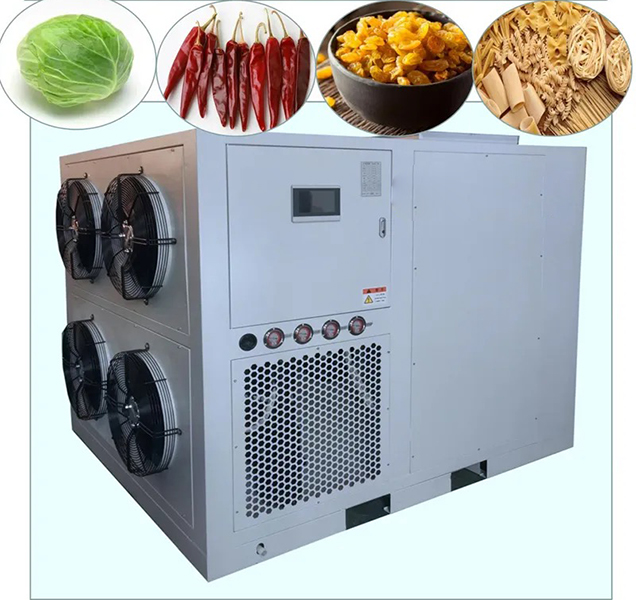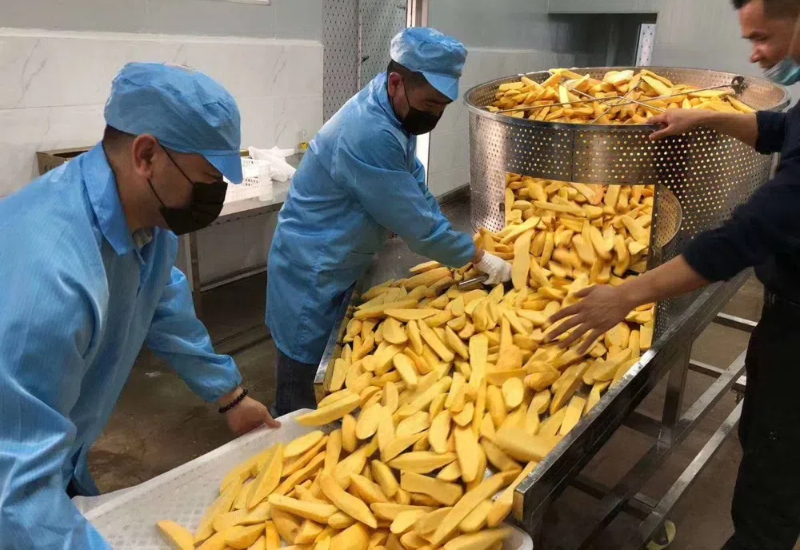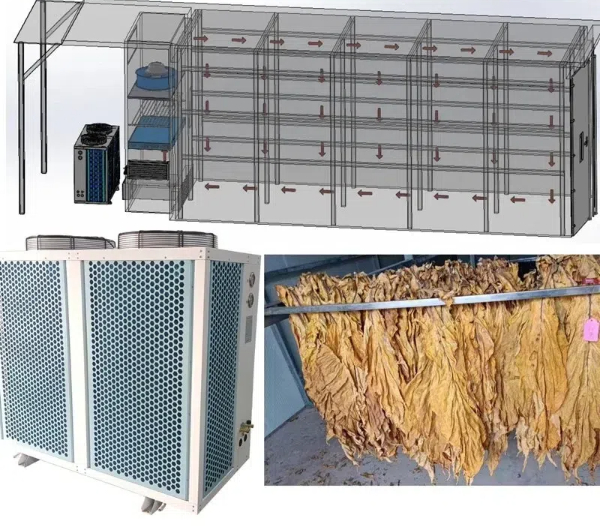
Content Menu
● Introduction
● The Evolution of Drying Technology
>> From Conventional to Heat Pump Drying
>> Historical Context
● Understanding Heat Pump Drying Technology
>> How Heat Pump Dryers Work
>> Technical Specifications
● Advantages of Heat Pump Drying
>> Energy Efficiency
>> Improved Product Quality
>> Versatility
>> Environmental Benefits
>> Extended Shelf Life
● Applications in the Food Industry
>> Fruit and Vegetable Drying
>>> Case Study: Mango Drying in Thailand
>> Herb and Spice Processing
>> Dairy Products
>> Meat and Fish Processing
● Market Trends and Growth Projections
>> Regional Adoption
● Technological Advancements
>> Integration of Smart Control Systems
>> Hybrid Systems
>>> Example: Solar-Assisted Heat Pump Dryer
>> Nanotechnology in Drying
● Challenges and Future Prospects
>> Initial Investment Costs
>> Optimization for Different Food Products
>> Scaling Up for Industrial Production
● Case Studies
>> Case Study 1: Fruit Drying Company
>> Case Study 2: Herb Processing Facility
>> Case Study 3: Seafood Processing in Norway
● Industry Perspectives
>> Expert Opinion
>> Manufacturer's Viewpoint
● Conclusion
● FAQs
>> 1. What is heat pump drying technology?
>> 2. How does heat pump drying compare to conventional drying methods?
>> 3. What types of food products can be dried using heat pump technology?
>> 4. What are the environmental benefits of heat pump drying?
>> 5. What future developments can we expect in heat pump drying technology?
● Citations:
Introduction
The food drying industry is experiencing a significant transformation with the advent of heat pump technology. As a Chinese food dryer manufacturer providing OEM services to international brands, wholesalers, and producers, it's crucial to stay abreast of these developments. This article explores the rising trend of heat pump technology in food drying, its benefits, applications, and future prospects.

The Evolution of Drying Technology
Drying has been a fundamental food preservation method for centuries. Traditional methods like sun drying have given way to more advanced techniques, with heat pump drying emerging as a game-changer in recent years.
From Conventional to Heat Pump Drying
Conventional drying methods often rely on direct heating, which can be energy-intensive and potentially damaging to heat-sensitive foods. Heat pump drying, on the other hand, offers a more efficient and gentle approach.
Historical Context
To fully appreciate the significance of heat pump drying, it's important to understand the historical context of food preservation. Ancient civilizations used sun drying and smoking to preserve food, techniques that remained largely unchanged for millennia. The industrial revolution brought mechanical drying methods, but these were often energy-intensive and could compromise food quality.
Understanding Heat Pump Drying Technology
Heat pump drying (HPD) is an innovative technology that provides a controllable drying environment with precise temperature and humidity control.
How Heat Pump Dryers Work
1. Heat Extraction: The system extracts heat from the surrounding air.
2. Air Circulation: Warm air is circulated through the drying chamber.
3. Moisture Removal: As the air cools, moisture is removed and collected.
4. Heat Recycling: The remaining heat is redirected back into the system.
Technical Specifications
Modern heat pump dryers operate at temperatures ranging from 10°C to 65°C, with some advanced models capable of reaching up to 90°C. The relative humidity in the drying chamber can be controlled between 10% and 80%, allowing for precise drying conditions tailored to specific food products.
Advantages of Heat Pump Drying
Heat pump drying offers several advantages over conventional drying methods:
Energy Efficiency
Heat pump dryers can achieve up to 50% energy savings compared to traditional drying methods. This significant reduction in energy consumption translates to lower operating costs and a smaller carbon footprint.
Improved Product Quality
The lower drying temperatures and controlled humidity levels in heat pump dryers help preserve the nutritional value, color, and flavor of dried foods.
Versatility
Heat pump dryers can handle a wide range of food products, including fruits, vegetables, herbs, and even heat-sensitive items.
Environmental Benefits
With lower energy consumption and no need for venting, heat pump dryers are more environmentally friendly than conventional dryers.
Extended Shelf Life
The precise control over drying conditions in heat pump dryers can lead to better moisture removal, resulting in dried products with extended shelf life compared to those dried using conventional methods.

Applications in the Food Industry
Heat pump drying technology is finding applications across various sectors of the food industry:
Fruit and Vegetable Drying
Heat pump dryers are particularly effective for drying fruits and vegetables, preserving their nutritional content and extending shelf life.
Case Study: Mango Drying in Thailand
A mango processing plant in Thailand implemented heat pump drying technology and reported a 40% increase in production efficiency and a 25% improvement in product quality compared to their previous hot-air drying method.
Herb and Spice Processing
The gentle drying process of heat pump dryers is ideal for preserving the delicate flavors and aromas of herbs and spices.
Dairy Products
Heat pump drying is being used in the production of powdered milk and other dairy products, offering energy savings and improved product quality.
Meat and Fish Processing
Heat pump drying technology is also being applied to meat and fish products, allowing for the production of high-quality dried meats and fish with improved texture and flavor retention.
Market Trends and Growth Projections
The global food dehydrators market, which includes heat pump dryers, is experiencing significant growth. According to a study by Polaris Market Research, the market is expected to reach USD 2.83 billion by 2032.
Regional Adoption
Asia-Pacific is emerging as a key market for heat pump drying technology, driven by the region's large food processing industry and increasing focus on energy efficiency. Europe and North America are also seeing steady growth in adoption, particularly in the organic and health food sectors.
Technological Advancements
Recent advancements in heat pump drying technology are further enhancing its efficiency and applicability:
Integration of Smart Control Systems
Modern heat pump dryers are incorporating sensors and smart control systems for more precise drying conditions and improved energy efficiency. These systems can automatically adjust drying parameters based on the product's moisture content and desired final quality.
Hybrid Systems
Researchers are exploring hybrid systems that combine heat pump drying with other technologies like solar drying or infrared heating for even greater efficiency.
Example: Solar-Assisted Heat Pump Dryer
A prototype solar-assisted heat pump dryer developed by researchers in Malaysia showed a 15% increase in energy efficiency compared to standard heat pump dryers, particularly in regions with high solar irradiance.
Nanotechnology in Drying
The integration of nanotechnology in heat pump drying is an emerging trend. Nanoparticles can be used to enhance heat transfer and improve the overall efficiency of the drying process.
Challenges and Future Prospects
While heat pump drying technology offers numerous benefits, there are still challenges to overcome:
Initial Investment Costs
The higher upfront costs of heat pump dryers compared to conventional dryers can be a barrier for some manufacturers. However, the long-term energy savings often justify the initial investment.
Optimization for Different Food Products
Further research is needed to optimize drying parameters for a wider range of food products. Each food item has unique characteristics that require specific drying conditions for optimal results.
Scaling Up for Industrial Production
While heat pump drying has proven effective on a small to medium scale, there are challenges in scaling up the technology for large industrial applications. Researchers and engineers are working on solutions to address this issue.
Case Studies
Case Study 1: Fruit Drying Company
A fruit drying company in California switched to heat pump drying technology and reported a 40% reduction in energy costs and a 15% improvement in product quality.
Case Study 2: Herb Processing Facility
An herb processing facility in Europe implemented heat pump dryers and saw a 30% increase in production capacity due to faster drying times and improved product consistency.
Case Study 3: Seafood Processing in Norway
A Norwegian seafood processor adopted heat pump drying for producing dried fish products. They reported a 50% reduction in drying time and a significant improvement in product texture and flavor compared to their previous hot-air drying method.
Industry Perspectives
Expert Opinion
Dr. Maria Rodriguez, a food technology researcher at the University of California, Davis, states: "Heat pump drying technology represents a significant leap forward in food preservation. Its ability to maintain product quality while reducing energy consumption aligns perfectly with the industry's goals of sustainability and efficiency."
Manufacturer's Viewpoint
John Chen, CEO of a leading Chinese food dryer manufacturer, comments: "As OEM providers, we've seen a dramatic increase in demand for heat pump drying solutions from our international clients. The technology's versatility and efficiency make it an attractive option for a wide range of food processing applications."
Conclusion
The rise of heat pump technology in food drying represents a significant advancement in the industry. With its energy efficiency, improved product quality, and environmental benefits, heat pump drying is poised to become the standard in food dehydration. As a Chinese manufacturer providing OEM services to international clients, embracing this technology can provide a competitive edge in the global market.
As the food industry continues to prioritize sustainability and product quality, heat pump drying technology is likely to see further innovations and wider adoption. Manufacturers who invest in this technology now will be well-positioned to meet the evolving demands of the market and contribute to a more sustainable food production system.
The future of food drying looks bright with heat pump technology leading the way. As research continues and technology advances, we can expect even more efficient and effective drying solutions that will revolutionize food preservation and processing.

FAQs
1. What is heat pump drying technology?
Heat pump drying technology is an advanced method of dehydrating food products that uses a closed-loop system to recirculate and dehumidify air. It offers precise control over temperature and humidity, resulting in energy-efficient drying and high-quality dried products.
2. How does heat pump drying compare to conventional drying methods?
Heat pump drying is more energy-efficient, gentler on food products, and offers better control over drying conditions compared to conventional methods. It can reduce energy consumption by up to 50% and better preserve the nutritional value and sensory qualities of dried foods.
3. What types of food products can be dried using heat pump technology?
Heat pump drying is versatile and can be used for a wide range of food products, including fruits, vegetables, herbs, spices, dairy products, and even heat-sensitive items. It's particularly effective for products that require careful moisture removal to maintain quality.
4. What are the environmental benefits of heat pump drying?
Heat pump drying technology offers significant environmental benefits due to its lower energy consumption, which reduces greenhouse gas emissions. Additionally, the closed-loop system eliminates the need for venting, further reducing its environmental impact.
5. What future developments can we expect in heat pump drying technology?
Future developments in heat pump drying technology are likely to focus on further improving energy efficiency, integrating smart control systems for optimized performance, and developing hybrid systems that combine heat pump drying with other technologies like solar or infrared heating.
Citations:
[1] https://cz.dryers-dehydrators.com/news/the-development-trend-of-food-heat-pump-dryers-66349200.html
[2] https://acespace.org/blog/2023/04/06/save-on-an-electric-heat-pump-dryer/
[3] https://cn.gii.tw/report/pola1287737-food-dehydrators-market-share-size-trends-industry.html
[4] https://pmc.ncbi.nlm.nih.gov/articles/PMC3550864/
[5] https://www.nyserda.ny.gov/Featured-Stories/Heat-Pump-Clothes-Dryer-Buyers-Guide
[6] https://www.databridgemarketresearch.com/zh/reports/global-food-spray-drying-equipment-market
[7] http://sciencebeingjournal.com/sites/default/files/Octa%20J.%20Biosci.%20Vol.%2010%20(2)124-133_0.pdf
[8] https://www.energystar.gov/products/ask-the-experts/save-more-laundry-heat-pump-clothes-dryer
[9] https://patents.google.com/patent/CN110207480A/zh
[10] https://www.summitappliance.com/blog/heat-pump-dryers-101











